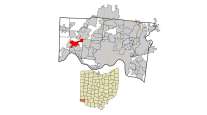Cargo Rates Trigger Shipper Backlash as US Rails Soar

After CSX Corp. raised rates for shipping specialty gas by 41% over three years, Diversified CPC International Inc. had to shutter a production line near Chicago.
The buyer of a custom-ordered Diversified gas didn’t want the expense from those freight bills, so it decided to bring the manufacturing in-house.
“We kept cautioning the railroad and cautioning the railroad, but they didn’t listen,” said Sandra J. Dearden, president of Highroad Consulting Ltd., which represents Diversified. “They priced everybody out of the business.”
Following a decade of increases that sent rail profits and stocks to records, shippers such as Diversified and Dow Chemical Co. are asking the U.S. government to help them fight back. They want to be able to compel railroads to hand off cargo to a rival in mid-journey and make it easier to challenge higher rates with the U.S.
Those demands are setting up a showdown in Washington, where railroad lobbyists say that easing the 1980 law that ended price controls would threaten the industry’s renaissance.
Rates may keep rising. Rail carloads climbed 7% last quarter, the fastest clip since the end of 2010, buoyed by surging crude-by-rail cargoes and a bumper North American grain harvest. Truckers are boosting fees, too, with long-haul rates estimated to rise 5.1% in the second half, according to data from transportation consultant FTR Associates.
With truckers running trailers at almost 100% capacity “in an improving demand environment, it makes sense that pricing should go higher,” said Justin Long, a Stephens Inc. analyst in Little Rock, Arkansas.
Since 2001, the average shipping cost per rail carload has climbed 93%, said Scott Jensen, a spokesman for the Washington-based American Chemistry Council trade group.
“That is what has our members and other shippers so concerned,” Jensen said last month in a telephone interview.
While a Standard & Poor’s index of 16 chemical companies almost tripled in the past 10 years, the S&P 500 Railroads Index has surged more than sixfold. The rail gauge rose 17% this year through yesterday, outpacing advances of 10 % for chemicals and 7.5% for the S&P 500.
Carriers say shippers are paying less for better service since the 1980 Staggers Act deregulated the industry. Since then, the inflation-adjusted cost for each ton hauled a mile has fallen 42%, said Ed Hamberger, chief executive officer of the Association of American Railroads in Washington.
Shippers want to restore regulated prices and return the industry to a cash-starved era with tracks so shabby that even immobile rail cars would tip over and trains forced to run at 10 miles (16 kilometers) per hour or less on a quarter of U.S. tracks, Hamberger said last month in a phone interview.
“Deferred maintenance was the buzzword of the day, which meant you didn’t put money back into the infrastructure,” he said. Healthy profit margins have allowed railroads to invest about $150 billion in the nation’s rail network during the last six years, Hamberger said.
Since deregulation, U.S. officials have upheld the railroads’ ability to charge more and maintain their rail lines, according to Long, the Stephens analyst.
“That will always be an ongoing debate between the shippers and the rails,” Long said.
Manufacturers’ efforts to rein in rates are unfolding on two fronts. One involves the process for challenging railroad rate increases at the Surface Transportation Board.
That effort now requires a “multimillion-dollar investment” in lawyer and consultant fees and can take several years to reach a decision, according to a letter sent to Senate leaders and signed by 24 trade groups representing the chemical, steel, cement, plastics, paper and fertilizer industries.
Shippers also say they want more rail choices after mergers cut the number of large carriers operating in the U.S. to seven from 26. The big four -- Union Pacific Corp. , BNSF Railway, CSX and Norfolk Southern Corp. -- handle 90% of U.S. freight.
Customers are seeking the right to transfer cargoes between railroads if a cheaper rate is available within 30 miles from where the shipment originated. The Surface Transportation Board held two days of hearings in March on the shippers’ proposal, called competitive switching.
The issue is pending before the board, and there is no deadline for a decision, Dennis Watson, a spokesman, said by e-mail.
Competitive switching would clog yards, drive up costs by requiring more trains and crews, and slow the entire network, CSX Chief Financial Officer Fredrik Eliasson said by phone last month.
“Very few shippers would benefit,” Eliasson said. “It would be to the detriment of everybody else.”
Diversified, based in Channahon, Illinois, sees competitive switching as a matter of survival. The factory there continues to operate after the buyer irked by rising rates forced the company “about three years ago” to idle a $500,000 investment in a custom gas used to make packaging, said Dearden, the consultant. A plant in Petal, Mississippi, may not be as lucky.
The chemical company can’t make its preferred rail connections to serve customers in the southeast U.S. from Mississippi, Dearden said. That means sending costlier, longer shipments from Illinois, Dearden said.
Melanie Cost, a spokeswoman for CSX, declined to comment on individual customers’ rates. The Jacksonville, Florida-based railroad sets prices based on the market value of rail transportation, she said by e-mail.
At Midland, Michigan-based Dow, which operates a fleet of more than 200,000 rail cars, about 80% of U.S. shipments are captive to one railroad, Executive Vice President David Kepler told the STB in March.
Competitive switching, he said, would make the supply chain more efficient, shaving 1 million miles a year from the distance traveled by cargo from the biggest U.S. chemical maker.




